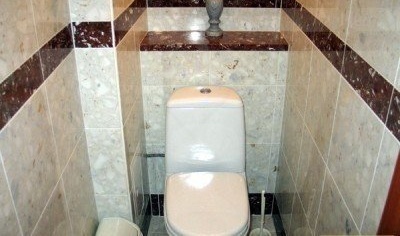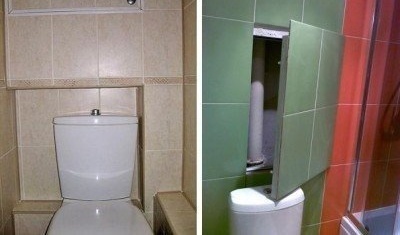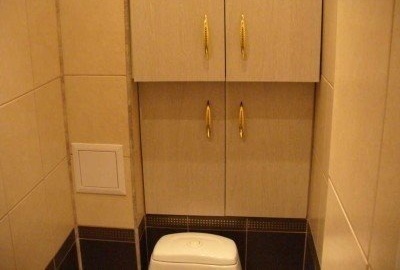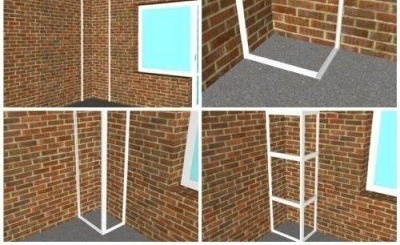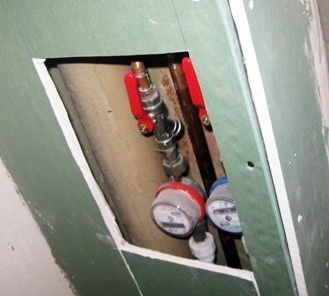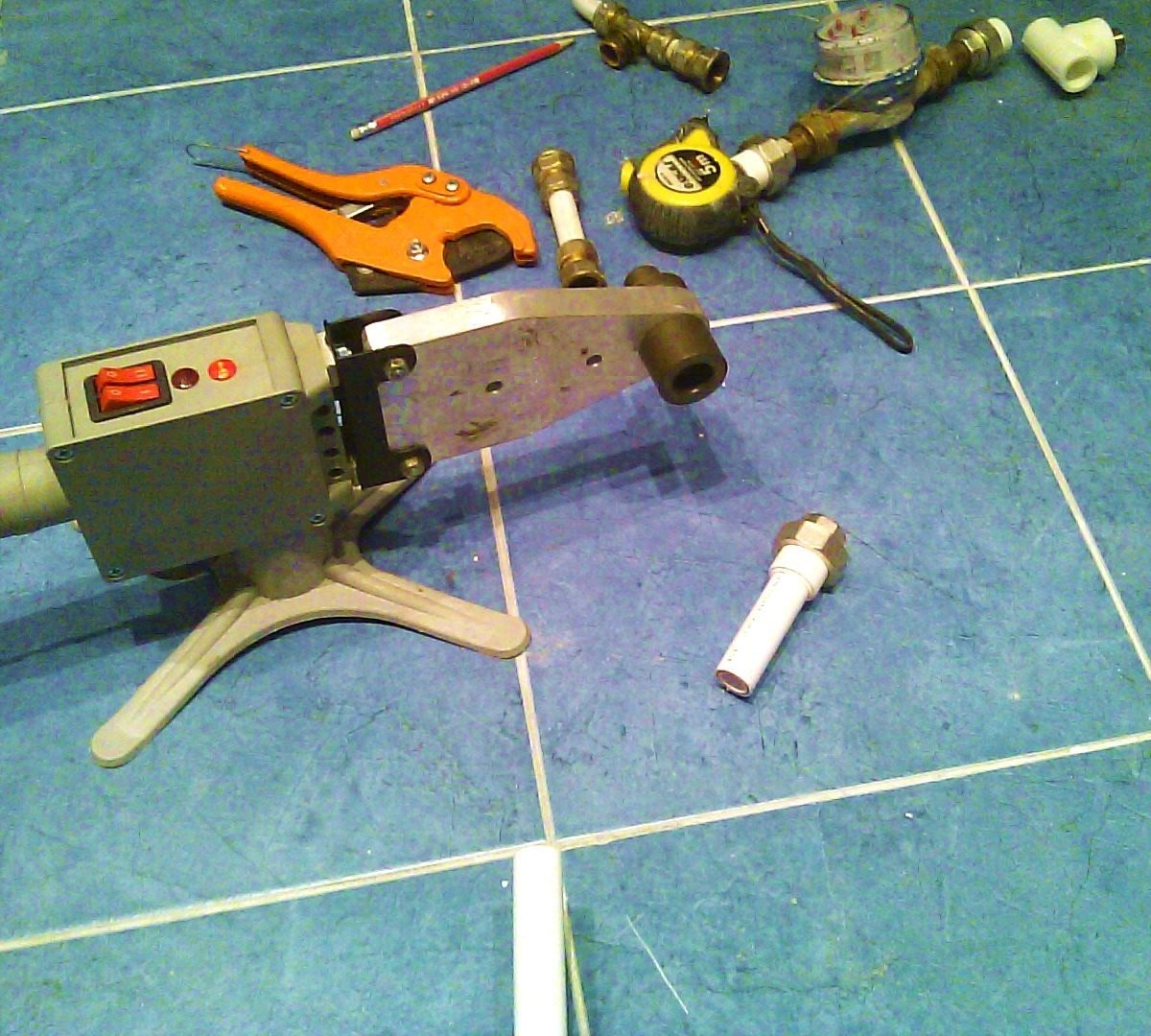How to hide pipes in the toilet - analysis of 3 popular ways to mask the pipeline
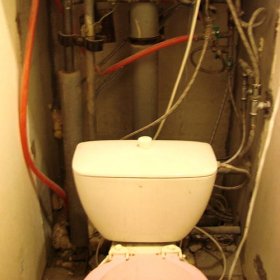
Pipes with hot and cold water, a sewer riser, meters, valves - all this does not decorate the toilet at all. Conducted communications clearly do not add aesthetics to this room. It is for this reason that many think about how to close the pipes in the toilet and hide all these unsightly things. In the framework of this article, we will try to analyze the main methods of masking the pipeline and give a description of their technology.
Content
What you need to know before you start?
Choosing a way to mask communications, you need to take care of their free access if necessary. It happens that in the event of an emergency it is necessary to break the constructed partition or wall. It is annoying and pathetic to ruin an arranged structure in which efforts, time, money are invested, but there is no other option.
You can avoid this situation if you take measures to reduce the likelihood of such problems. The pipe should be carefully checked for defects that could lead to leakage over time. It is necessary to examine all available connections for leaks. It is important that the transition elements (couplings, angles, tees, etc.) related to hot water supply are made from the material from which the pipes are made. Then, when heated, the individual elements of the water supply will expand equally, which will prevent unpleasant consequences.
It is known that less often malfunctions will occur where a single section of the pipeline has a smaller number of connecting elements. Therefore, before you hide the pipes in the toilet, it’s nice to spend money, and replace the old communications with reliable new ones.
An overview of possible pipe masking techniques
There are many ways to mask communications in the toilet. Consider some of them: the device of a decorative box, a utility cabinet and blinds.
Read our material on how to avoid mistakes when designing the piping in the bathroom and toilet:https://aquatech.tomathouse.com/en/santehnika/razvodka/pravilnaya-razvodka-trub-v-vannoj-i-tualete.html.
So that a minor leak does not grow into a flood due to the lack of quick access to damaged places, it is advisable not to get too carried away with an aesthetic design. For the decorative box, you should choose those materials that can be easily dismantled (drywall, plywood, etc.). The presence of a door in the duct, providing access to the valves, will save in many situations from dismantling.
Drywall or plastic box
Even with a minimum of building skills, you can do pipe box in the toilet. More often, this design is made of a metal profile, and subsequently sheathed with plastic or drywall. Instead of a profile, you can use wooden bars. If the option with drywall is selected, then then tiles are usually glued to it.
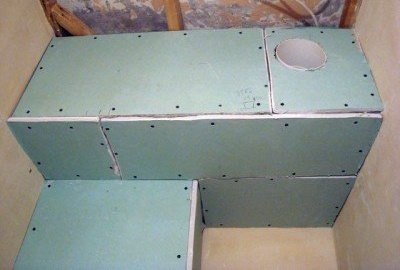
This method slightly reduces the area of this small room and limits the ability to repair riser pipes without disturbing the decorative coating.
The option with plastic panels is simpler and more convenient. For work, you will need bars or a metal profile, panels made of plastic, dowels and small self-tapping screws with a press washer (the so-called "flea"). Start with markup. It must be taken into account that in a fixed form the profile must not come into contact with the pipes. The distance between them should be approximately 4-5 cm. Using a punch, the profile is fixed to the walls with dowels and nails. Then the levels on the ceiling and floor are laid off from it, and the profile is fixed in the same way. Having installed the frame, they begin to sheathe it with plastic panels, fitted in size.
Even before starting work, it is important to consider the location of the door to access communications if necessary. It is better if its dimensions are as large as possible, depending on the geometry of the box. Indeed, to carry out some types of repair work, considerable space is needed.
The hatch should be invisible on the surface of the partition, it should look with it as a whole. Some difficulty lies in the fact that it is not always possible to achieve a tight fit of the door to the sides of the opening.
However, it is not difficult to sew pipes in the toilet, making the hatch invisible. Enough to include the imagination. So, it is possible, using contrasts with the main coloring, to finish the surface of the box with figures of the same color, size and shape as the door, placing it in different places. By placing these elements symmetrically, you can get a design in the form of a decorative mosaic.
You may also find this article useful for installing a screen under a bathtub:https://aquatech.tomathouse.com/en/santehnika/vanna/ustanovka-ekrana-pod-vannu-svoimi-rukami.html.
Locker construction
Thinking about how to hide the pipes in the toilet, you can resort to another method and build a useful cabinet, which will be an excellent disguise for valves, filters, meters installed on the pipes. They will not be visible, and if necessary, trouble-free access is always provided.
First of all, a frame is made of wooden blocks and is attached to the side walls of the toilet with metal dowels. Hinges are installed on the frame, and on them are doors that can be varnished or painted to protect against moisture. In addition, it looks more aesthetically pleasing. Any wood will do. Such a cabinet is very convenient for storing all kinds of cleaning products and household items.
Below, under the cabinet, a screen for pipes in the toilet can be arranged, collapsible or solid. In the manufacturing process, it is important to consider the following details:
- a tight fit of the screen to the walls is necessary;
- technological holes must be present for the water supply to the tank and for the fan pipe;
- the screen should be easily and simply inserted and also removed.
The material can be gypsum board, laminated particleboard or plywood (10-12 mm). Consider the stages of building a plywood cabinet.
The first thing to do is measure the width and height of the niche behind the toilet. And it is mandatory below and above (in case of uneven walls). In our version, the screen will be inserted and delivered through a removable shelf located above the cabinet.
Then, a part of the required size is cut out of plywood and inserted into a niche. The next step is to measure the height to the edge of the sheet from the floor, in order to calculate the size of the depth of the groove under the flexible eyeliner.It is recommended that you add 5 cm in width and height to the taken measurements. After cutting the groove, the screen is inserted into a niche, and it is checked that everything is done correctly. They take it back, paint it and finally put it back.
Blind option
Unlike all of the above methods, closing the pipes in the toilet with the help of blinds is probably the best option. Especially convenient is their use in small, cramped bathrooms. Any constructions made of plastic, drywall and other materials, at least a little, but still “eat up” the already small area of the room. Using roller shutters, you can close the pipes in the toilet from the ceiling to the floor. Stylish and modern look is not the most important thing. The use of roller blinds will provide unhindered and free access to any section of the laid communications.
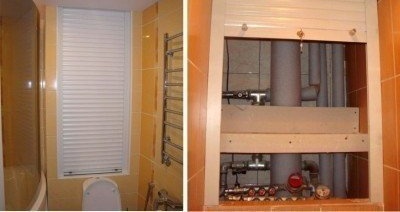
Closing pipes in the toilet with roller shutters is a very convenient option. They are compact and provide unhindered access to communications if necessary.
Read also about methods of masking heating pipes:https://aquatech.tomathouse.com/en/uchebnik/montazh/kak-spryatat-truby-otopleniya.html.
Such a curtain will reliably hide a niche with counters and filters. It’s not difficult to clean the last ones or see the readings of the counters, you just need to raise the roller shutters. Installation of such a shelter for pipes is quite simple. In the raised state, the blinds free up a considerable area in the niche, which can be successfully used to store household equipment (rags, mop, soap, etc.). The box itself, located under the ceiling, does not interfere and does not cause any inconvenience.
Masking horizontally oriented pipes
Typically, hot and cold water pipes are placed horizontally in the bathroom. They can be closed in such a way as to provide unhindered access using chipboard, plastic or plywood.
The pipes are sewn into the toilet in the form of a step, under which the pipes are located. The resulting surface can be used as a shelf, for example, for toilet paper or other items.
Measurements are taken on which the material is cut. The “step” is fastened with screws. In order for the structure to become stable, a board is inserted between the pipes and the wall, which, in its upper part, contacts the inner surface of the horizontal board. They are fastened together by a long screw. It is possible to further cover the structure with paint, varnish or pasting with film, wallpaper.
There are many ways to help hide the pipes in the toilet. The main thing, in the pursuit of the beauty and aesthetics of the bathroom’s appearance, is not to overdo it or disturb the system’s performance.
